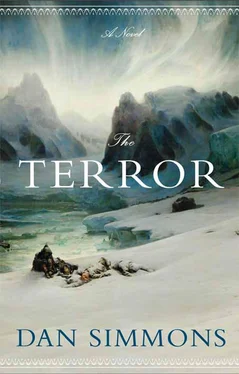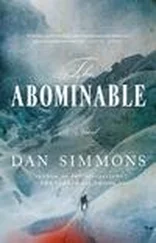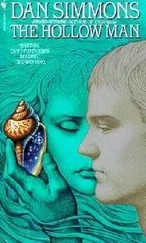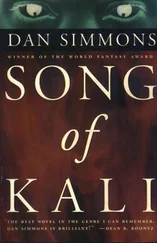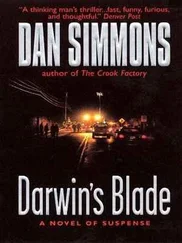Crozier continued walking deeper into the maze of coloured apartments.
Beyond the blue chamber, turning sharply to the right, was a long purple room. Crozier saw that it was not empty. The men realizing this Carnivale had placed rugs, tapestries, tables, or casks here and there in each apartment, their furnishings and fixtures dyed or painted the same hue as the glowing walls.
Beyond the purple room, bending back sharply to the left here but at such an odd angle that Crozier would have had to look at the stars – had there been any stars visible – to ascertain his exact bearings, was a long green chamber. This long room held the most revelers yet: more exotic birds, a princess with a long horse’s face, creatures so segmented and oddly jointed that they appeared to be giant insects.
Francis Crozier recalled none of these costumes from Parry’s trunks on the Fury and Hecla , but Fitzjames had insisted that Franklin had brought precisely those moldering old artifacts.
The fourth chamber was furnished and lighted with orange. The torchlight through the thin orange-dyed canvas here seemed rich enough to taste. More orange canvas, painted and dyed to resemble tapestries, had been laid out on the sea ice, and there was a huge punch bowl on the orange-sheeted table at the center of the interior space. At least thirty or more wildly costumed figures had converged on the punch bowl, some dipping their beaked or fanged visages to drink deeply.
Crozier realized with a shock that loud music was coming from the fifth segment of the apartment maze. Following another bend to the right, he came into a white chamber. Sheet-covered sea trunks and officers’ mess-room chairs had been set along the white canvas walls here, and the almost forgotten mechanical music player from Terror ’s Great Cabin was being cranked by a costumed fantastic at the far end of the chamber, the machine pouring out music hall favorites from its large rotating metal disks. The sound somehow seemed much louder out here on the ice.
Revelers were coming out of the sixth chamber and Crozier walked past the music player, took the sharp angle to the left, and entered a violet room.
The captain’s seaman’s eyes admired the rigging that rose from upended spare spars to a tethered spar hanging in midair – webs of rigging came in from the other six chambers there to be tied off – and the master cables that ran up from this center spar to anchors high on the wall of the iceberg. The riggers from Erebus and Terror who had conceived and executed this seven-chamber maze obviously had also exorcised some of the incredible frustration at not being able to pursue their trade due to being icebound and static for so many months, their ships’ topmasts, spars, and rigging pulled down and stored on the ice. But this violet room had few costumed crewmen tarrying in it and the light was strangely oppressive. The only furniture here consisted of stacks of empty crates at the center of the room, all draped in violet sheets. The few birds, pirates, and ragmen in this room paused to drink from their crystal goblets carried from the white room, looked around, then quickly returned to the outer chambers again.
The final room beyond the violet room seemed to have no light at all coming from it.
Crozier followed the sharp angle to the right from the violet chamber and found himself in a chamber of almost absoluteblackness.
No, that was not true, he realized. Torches burned outside the black-dyed sail walls here just as they did beyond all the other chambers, but the effect was only of a subdued glow through ebony air. Crozier had to stop to allow his eyes to adapt, and when they did, he took two startled steps backward.
The ice underfoot was gone. It was as if he were walking above the black water of the arctic sea.
It took only seconds for the captain to realize the trick. The seamen had taken soot from the boiler and coal sack holds and spread it across the sea ice here – an old seaman’s trick when wanting to melt the sea ice more quickly in late spring or recalcitrant summer, but there was no melting tonight with the sunless days and temperatures dropping toward −100 degrees. Instead, the soot and carbon made the ice underfoot invisible in the ebony gloom of this final, terrible compartment.
As Crozier’s eyes adapted further, he saw that there was only one piece of furniture in the long black compartment, but his jaws clenched with anger when he saw what it was.
Captain Sir John Franklin’s tall ebony grandfather clock was set at the far end of this black compartment, its back to the rising iceberg that served as the far wall to the ebony room and the end of the seven-chamber maze. Crozier could hear the heavy ticking of the thing.
And above the ticking clock, extruding from the ice like something struggling to gain its freedom from the iceberg, was the white-furred head and ivory-yellow teeth of a monster.
No, he checked himself again, not a monster. The head and neck of a large white bear somehow had been mounted onto the ice. The creature’s mouth was open. Its black eyes reflected the small amount of torchlight that made its way through the black-dyed canvas walls. The bear’s fur and teeth were the brightest things in the ebony compartment. Its tongue was a shocking red. Beneath the head, the ebony clock ticked like a heartbeat.
Filled with a fury that he could not define, Crozier marched from the ebony compartment, paused in the white room, and bellowed for an officer – any officer.
A Satyr with a long papier-mâché face and a priapic cone rising from its red belt scuttled forward on black metal hooves set beneath heavy boots. “Yes, sir?”
“Take off that fucking mask!”
“Aye, aye, Captain,” said the Satyr, sliding the mask up to reveal Thomas R. Farr, Terror ’s captain of the maintop. A Chinese woman with huge breasts next to him lowered her mask to show the round, fat face of John Diggle, the cook. Next to Diggle was a giant rat who lowered its snout enough to show the face of Lieutenant James Walter Fairholme of Erebus .
“What in hell is the meaning of all this?” roared Crozier.
Various fantastical creatures cringed back toward the white walls at the sound of Crozier’s voice.
“Of which exactly, Captain?” asked Lieutenant Fairholme.
“ This !” bellowed Crozier, raising both arms and hands to indicate the white walls, the rigging overhead, the torches… everything.
“No meaning, Captain,” responded Mr. Farr. “It’s simply… Carnivale.” Crozier had always, until this moment, thought Farr a reliable and sensible hand and a fine maintop captain.
“Mr. Farr, did you help in the rigging?” he asked sharply.
“Yes, sir.”
“And Lieutenant Fairholme, were you aware of the… animal’s head… exhibited so bizarrely in that final chamber?”
“Aye, Captain,” said Fairholme. The lieutenant’s long, weathered face showed no sign of fear at his expedition commander’s anger. “I shot it myself. Yesterday evening. Two of the bears, actually. A mother and its almost grown male cub. We’re going to roast the meat toward midnight – have a sort of feast, sir.”
Crozier stared at the men. He could feel his heart pounding in his chest, could feel the anger that – mixed with the whiskey he’d had that day and the certainty there would be no more in the days to come – had often led him to violence ashore.
He had to be careful here.
“Mr. Diggle,” he said to the fat Chinese woman with the huge breasts, “you know the liver of the white bears has made us ill.”
Diggle’s jowls bobbled up and down as freely as the pillowed bosoms beneath them. “Oh, yes, Captain. There’s something foul in the polar beast’s liver that we haven’t been able to heat out of it. There’ll be neither liver nor lights in the feast I cook tonight, Captain, I assure thee. Only fresh meat – hundreds and hundreds of pounds of fresh meat, grilled and singed and fried to perfection, sir.”
Читать дальше
